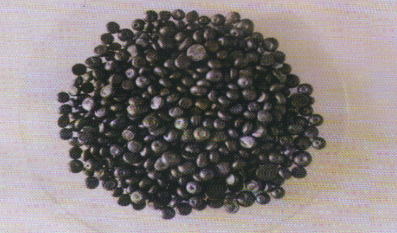Palm oil, castor oil, soybean oil, animal oil, vegetable oil, fatty acid, ester, unsaturated resin (C5, C9), chemical (lipid, acid, ketone) hydrogenation catalyst

1.Use and performance
Grease is an important raw material for industries such as daily chemistry, textile printing and dyeing, rubber plastics, and medicine. Because of its unsaturated bonds, it is easy to be oxidized and is not conducive to long-term storage. Unhydrogenated grease is liquid and difficult to transport, so it is often used. The hydrogen method treats it.
LS9920 oil hydrogenation catalyst is suitable for the hydrogenation treatment of palm oil, castor oil, soybean oil, animal oil, fatty acid, esters, unsaturated resin (C5, C9, etc.) chemicals (lipids, acids, ketones, etc.), which can be substituted Raney nickel catalyst has the characteristics of high hydrogenation activity, good stability, easy dispersion, easy separation from the product, convenient use, and safety, and the overall level has reached the international advanced level.
2.Main physical and chemical performance indexes of LS9920 hydrogenation catalyst
Shape: black hemispherical solid particles;
Nickel content wt/wt%: 21~23; Particle size: 5~6mm; Bulk density: 0.7~0.8kg/L;
Melting point: 55~60℃;
Flash point: about 300℃;
Auto-ignition point: about 350℃.
3. the principle of oil hydrogenation reaction catalyst
-CH==CH-+H2–CH2-CH2一+heat
The history of oil hydrogenation:
1) Hydrogen is dissolved in the mixture of oil and catalyst;
2) The reactants diffuse to the surface of the catalyst;
3) Adsorption;
4) Surface reaction;
5) Desorption;
6 The product diffuses outward from the surface of the catalyst.
4. typical use conditions
(1). Use conditions for palm oil hydrogenation:
Under the conditions of 0.35-0.85% catalyst addition, 0.8-2.0MPa reaction pressure, 140-200°C reaction temperature, and 1.0 hour reaction time, the product iodine value: +0.5g12/100g.
(2). Use conditions for castor oil hydrogenation:
Under the conditions of 0.45-0.85% catalyst addition, 0.8-2.0MPa reaction pressure, 130-140°C reaction temperature, and 8.0 hours reaction time, the product has an iodine value of +3.0g12/100g.
5, use method
There are two types of oil hydrogenation process: batch type and continuous type. Pay attention to the following two points when using the catalyst: the catalyst should be mixed with a certain amount of 100±10℃ raw oil;
2. After the catalyst is added, the reactor must be vacuumed to remove the moisture in the internal air and raw materials before starting up.
6. packaging, storage and transportation
(1). The standard packaging of this product is metal iron, with a net weight of 170 kg, and it can also be packaged according to customer requirements.
(2). The product should be protected from rain and squeezing during storage and transportation.
(3). This product can be stored for at least 2 years in a closed barrel or bag from the date of leaving the factory, and the catalyst performance will not be significantly reduced.
(4). During the storage period of this product, prevent moisture absorption and chemical pollution.
Seven, pre-sales and after-sales technical consultation and services
For any problems encountered in the process of using LS9920 oil hydrogenation catalyst, our company can provide timely high-quality technical services according to customer requirements, including catalyst use, start-up site guidance and waste catalyst recovery solutions. Provide timely technical support for actual on-site problems such as device raw materials and process changes.
Email: h@hydrogenationcatalyst.com